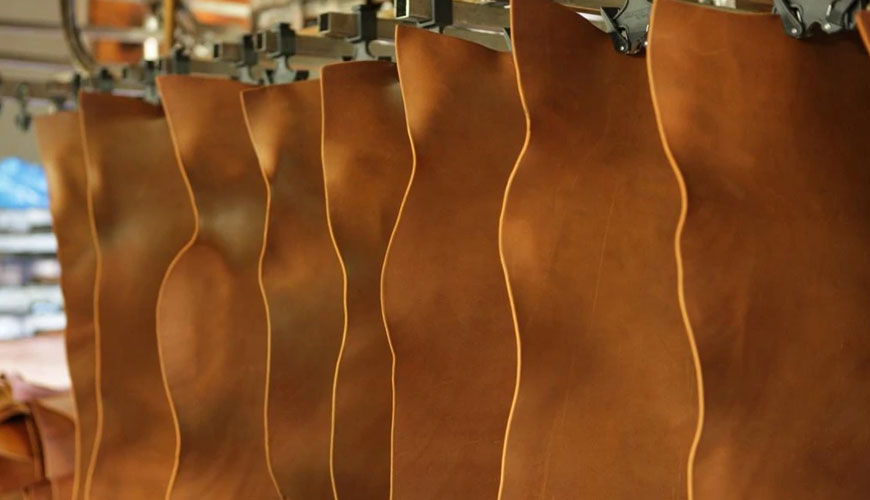

The ISO 2589 standard, developed by the International Standards Organization (ISO), specifies a method for determining the thickness of leather. The method is applicable to all types of leather of any tanning. The measurement is valid for both the whole skin and a test sample.

In the leather industry, the mechanical processes applied in the processing of tanned leather and its transformation into a textile product are very important. The first of the mechanical processes is to adjust the leather to the desired thickness.
When thickness adjustment is made in the leather, if the thickness of the leather is more than the thickness after tanning, splitting is performed. On the other hand, if this excessive thickness is technically acceptable, this time the skin shaving process is started. During this process, the excess thickness is shaved off and removed from the skin.
The chemical structure of the skin is 55 carbon, 25 oxygen. The rest are elements such as hydrogen, nitrogen, sulfur, phosphorus and iron. Biologically, percent 65 is water and percent 33 is protein. It is necessary to protect the skin from microorganism activities in the time it takes to process raw leather as finished leather.
The adjustment to be made so that the leather is at the desired thickness is very important among the mechanical operations performed during the production of a certain type of finished leather. If the desired final thickness of the leather is very different from the thickness measured after the tanning processes, thickness adjustments are made on the leather.
If the thickness differences are too small to be evaluated technically, the skin is trimmed immediately. With this process, the parts remaining above the desired thickness setting are shaved and discarded. Dry shaving is a process of adjusting the thickness of treated leathers to a standard shape.
The tensile, tear and elongation strength of the skin, as well as its thickness, vary according to the species and body regions of the animal. In addition, skin weight, skin size and skin thickness increase with the age of the animal.
Among the services provided by our organization within the framework of material testing services, there are also ISO 2589 standard tests.
To get an appointment, to get more detailed information or to request an evaluation, you can ask us to fill in our form and reach you.